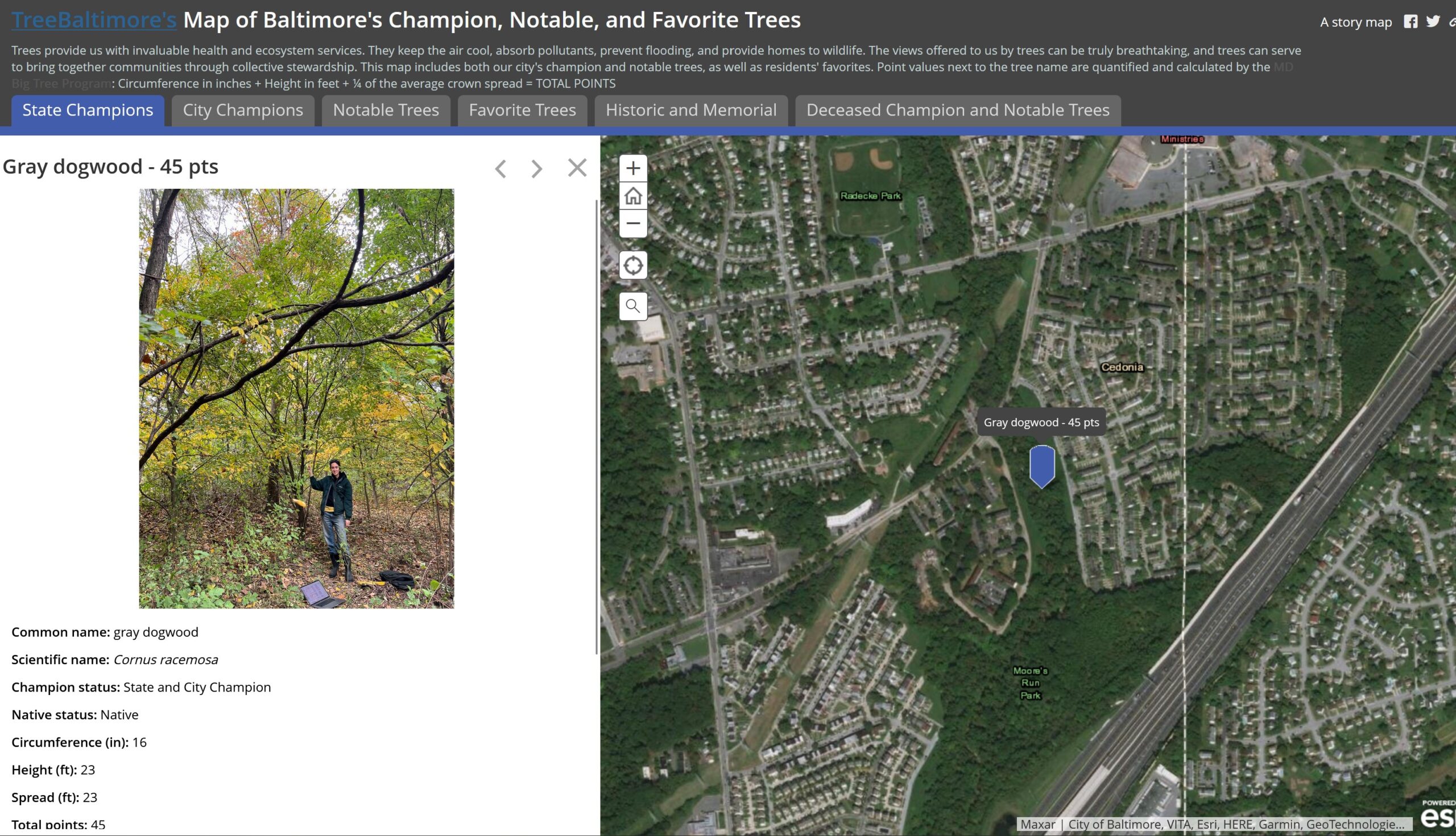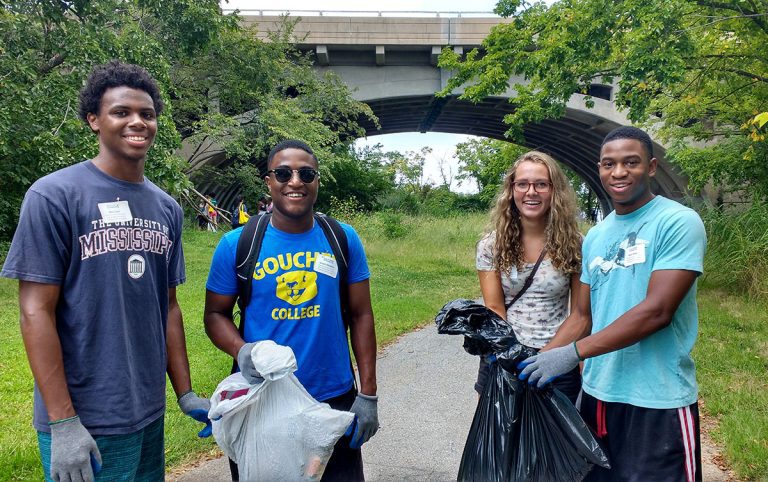Blue Water Baltimore’s New State Champs
The Next Generation of Baltimore’s Forests
Blue Water Baltimore staff and volunteers have planted several thousand trees across our local watersheds over the past 15 years. Some of these trees are now reaching maturity and helping us reach our citywide goal of 40% canopy coverage.
This month, I headed out into the field with TreeBaltimore staff member, Fred Chalfant, to check in on some of Blue Water Baltimore’s older planting sites. We returned with some exciting news: a couple of trees planted by our staff and volunteers are now large enough to be new city and state champions!
What is a champion tree?
Maryland created the first Big Tree Measuring Program in the nation. Since 1925, Marylanders have been seeking out and recording ‘Champion Trees.’
Champion trees are the largest of their species on a city, state, or national level.
Notable trees must be at least 70% of the points of the state champion. Sometimes they are former champ that have been out-measured.
Historic trees have some cultural significance other than size. They could be memorial trees planted in memory of an individual or associated with a person (such as the Al Capone weeping cherry out front of Union Memorial Hospital on 33rd St., or the Frederick Douglass English elm located on Sharp St downtown).
How do you measure a tree?
The point system that is now used nationally to measure tree size was developed in Maryland by our first forester, Fred Besley. A tree receives one point for every inch of circumference as measured 4.5 feet above the ground, one point for every foot of height, and 1/4 point for each foot of average canopy spread.
Let’s meet the new champs!
Fred and I teamed up on a cloudy fall morning and headed out across town on a ‘big tree safari’ to measure a few unique tree species.
When you think of the largest tree of a given species, you probably imagine a massive, ancient oak stretching up several stories overhead. However, for some trees that are often more bush-like in stature, 15 feet can be impressive. These new champs might not be giants, but their stature is still worth acknowledging!
Winged sumac, Rhus copallinum
CIRCUMFERENCE: FEET: 1’ 1” INCHES: 13” HEIGHT: 14’
Our first stop was a visit to Clifton Park to find a winged sumac located near the intersection of Indian Drive and N Rose Street. GPS COORDINATES: 39.320838, -76.582593

Sumacs often grow in thickets, but this tree in Clifton Park that was planted in the fall of 2017 has matured into a single stem trunk. Winged sumac has glossy, dark green, pinnately compound leaves (the leaf is divided into smaller leaflets, which are arranged on each side of the leaf’s central stalk or axis) that turn brilliant reddish-purple in the fall. This species is easily distinguished by the wings along the leaf axis (see photo below). Native sumacs are important wildlife plants, providing winter food for many upland gamebirds, songbirds, and large and small mammals. They are fast growing, generally pest and disease-free, and drought tolerant.
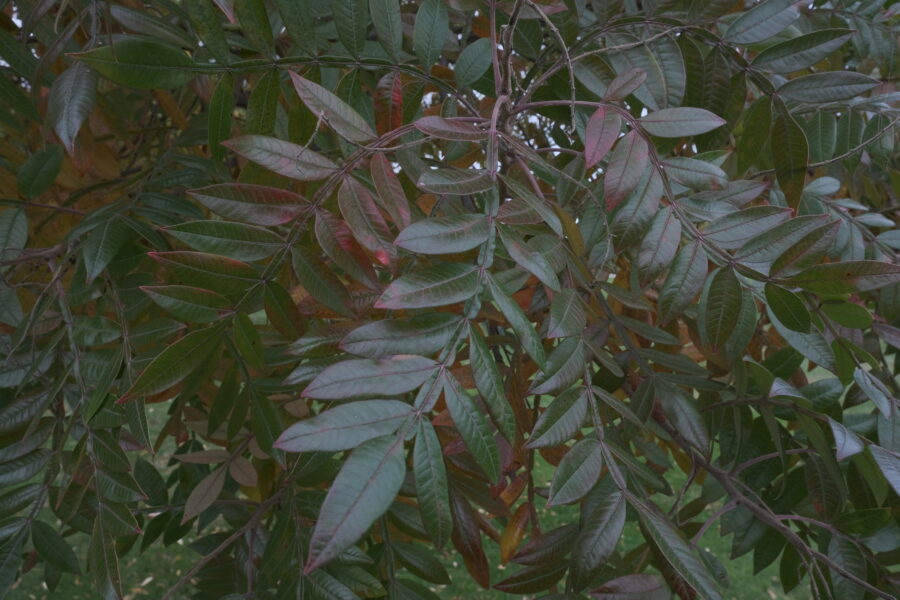
Next, Fred and I headed east to Herring Run Park where we measured two new champs, both planted in the fall of 2012!
Common buttonbush, Cephalanthus occidentalis
CIRCUMFERENCE: FEET: 1’ 0” INCHES: 12” HEIGHT: 11’
We measured the new Baltimore City Champion buttonbush! This tree is the second largest buttonbush in the state, just a few points less than one in Montgomery County, and that tree happens to be the NATIONAL champ (yep, the largest buttonbush measured in the entire U.S. is in MoCo!) You can pay homage to our majestic 11-foot-tall Baltimore buttonbush in Herring Run Park near the intersection of Parkside Drive and Sinclair Lane. GPS COORDINATES: 39.3185777 -76.5548991
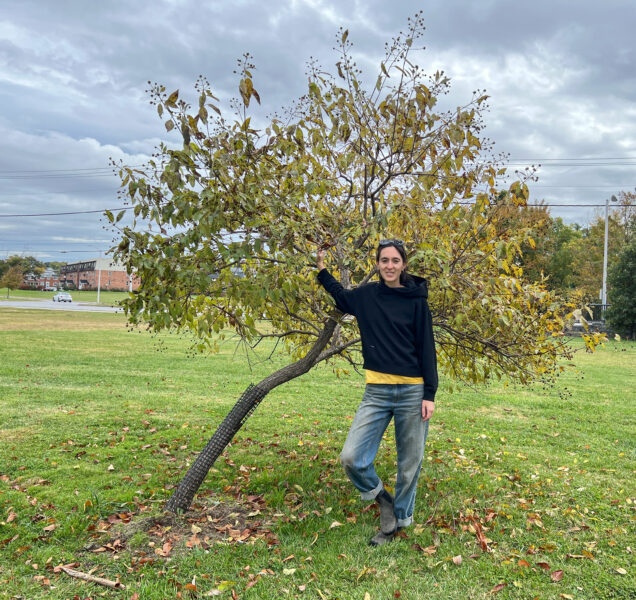
Common buttonbush is often found as multi-stemmed shrub or small tree. In the summer, it displays unique white flowers that have a pincushion-like or starburst effect. Flower heads mature into reddish-brown spherical fruits that persist throughout the winter. Buttonbushes have wildlife value for a variety of pollinators, waterfowl, birds and mammals. They are suited to wet soils and often found in standing water in swamps and along streams.
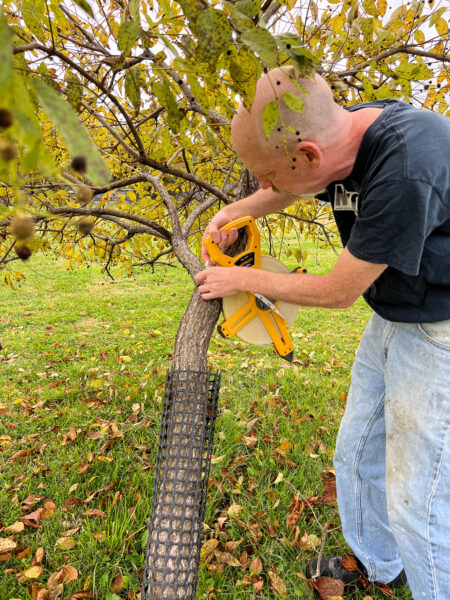
American plum, Prunus americana
CIRCUMFERENCE: FEET: 1’ 7” INCHES: 19” HEIGHT: 16’
Just a few yards away from the buttonbush, we measured a new STATE champion American plum, also planted in 2012. GPS COORDINATES: 39.3188672, -76.5549635
American plum is a popular landscape tree with fragrant, white flowers in early spring. Late-summer fruits are sweet and juicy, making excellent jams, jellies, preserves and pies. The plums can also be halved, then pitted and dried like prunes, spread in a thin sheet and dried as fruit leather. Fall leaf color ranges from electric red to pale yellow. Regular removal of suckers, or branches growing from the base of the tree, is sometimes necessary to prevent unwanted spread. Trees provide valuable nesting cover and are a host to many butterflies. They tolerate drought and dry soil.

Gray dogwood – Cornus racemose
CIRCUMFERENCE: FEET: 1’ 4” INCHES: 16” HEIGHT: 23’
Finally, we stopped to measure a gray dogwood tucked in the woods of Moores Run Park near the intersection of Cedgate Road and Saint Regis Road. GPS COORDINATES: 39.3261549 -76.5330452
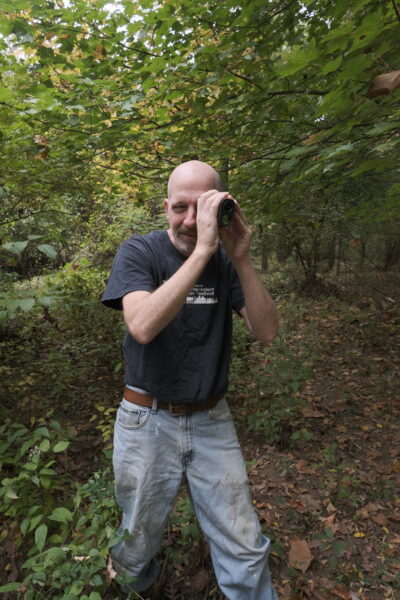
This was planted several years earlier than the others we visited, most likely by Herring Run Watershed organization, one of the 5 legacy groups that merged to become Blue Water Baltimore in 2010. Larger trees have now closed the canopy around it, but it is thriving in the understory.
Gray dogwood is frequently planted for its showy spring flowers, late-summer white berries, and reddish-purple fall foliage. It spreads rapidly by growing suckers and is best used in naturalized settings. It will also serve to control erosion near ponds or embankments. Gray dogwood is resistant to most diseases, insects and physiological problems. The fruit is used by many bird species including Northern Cardinal, Downy Woodpecker, Northern Flicker, and Eastern Bluebird.
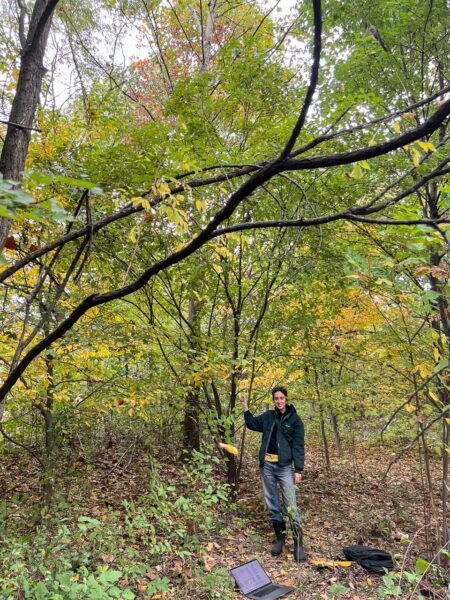
All these trees are now listed on the TreeBaltimore Champion Tree Map.
What is the value of measuring champion or notable trees?
Planting trees is important work, and something we pride ourselves on at BWB. Yet we must also recognize and celebrate the beauty and resiliency of existing mature trees in our communities! Large trees are irreplaceable assets in our urban forest. They provide enormous economic and environmental benefits. And they make city life enjoyable! Big trees absorb hundreds of gallons of rain during large storms, reducing flooding and making our communities more resilient to the effects of climate change. They shade our streets and improve the mental and physical health of residents. A mature oak tree supports more than 600 species of caterpillars, which in turn provide necessary protein for our native bird populations. There is a different reason for everyone to love trees.
Nominating a city or state champ, or a notable tree does not automatically protect it from development, but it does give it significance that might make someone think twice before removing it.
Get involved! Join your local Forestry Board and volunteer to measure trees:
Maryland is fortunate to have a network of individuals who serve voluntarily on Forestry Boards as advocates for our forests in partnership with their parent agency, the Maryland Dept. of Natural Resources – Forest Service. Commonly referred to as Forestry Boards, the Forest Conservancy District Boards function in all jurisdictions— 23 Maryland Counties and Baltimore City. The 24 boards are joined in a State Association of Forest Conservancy District Boards.
In Baltimore City, a group of volunteers local board regularly heads out on ‘big tree safaris’ to document these specimens across our green spaces.
Visit The Baltimore City Forestry Board website to learn more.
Nominate a tree!
Visit The Maryland Big Tree Program website and the TreeBaltimore website to find champs and nominate more trees across Maryland!
Happy hunting!

